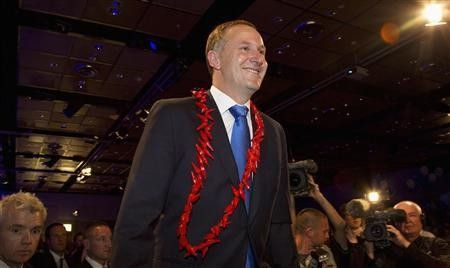New Zealand Prime Minister John Key Criticised for Early Election Date; Labour Confident of Voter Turnout

New Zealand Labour leader David Cunliffe reacted to reports of Prime Minister John Key announcing the election date. Mr Cunliffe claims the September 20 election date is convenient for the prime minister to suit his needs.
Mr Key has opted for an election on September 2014 to allow ample time for New Zealand to form a government before November's G20 summit in Australia. Mr Key told media that several members of the G20 countries wanted to visit New Zealand. Their visit would not be possible if the country is still in the middle of an election campaign.
Mr Cunliffe criticised Mr Key for choosing a September election instead of the usual November schedule. He said Mr Key is only "manipulating" Kiwis to his advantage.
Mr Cunliffe claimed Mr Key's agenda is to reduce voter turnout by having an early spring date. Despite the early election date, the Labour leader is confident of his party's supporters who want a "new direction" for New Zealand. He said the cold weather will not deter Labour voters.
Mr Cunliffe suggested that Winston Peters, New Zealand First party leader, should join the largest coalition instead of going to the biggest party as advised by Mr Key. In TVNZ's Breakfast One show, Mr Cunliffe revealed that a possible coalition will be formed between Labour and the Green Party including NZ First.
New Zealand Green Party co-leader Russel Norman said voter turnout should be regarded as more important that the G20 summit. The colder weather in September might affect the number of people who go out to vote. Mr Norman accused Mr Key of attempting to have an election before New Zealanders will feel the impact of increasing mortgage rates and price of electricity.
Aside from the government leaders, New Zealanders will also be voting for a change in the country's flag on September 20. The prime minister is expected to announce a referendum on changing New Zealand's flag. A two-part referendum was planned with the first to decide on changing the flag while the second will be opting for a new design. Another option would be to let voters decide between the newly-designed flag or the current one.





















